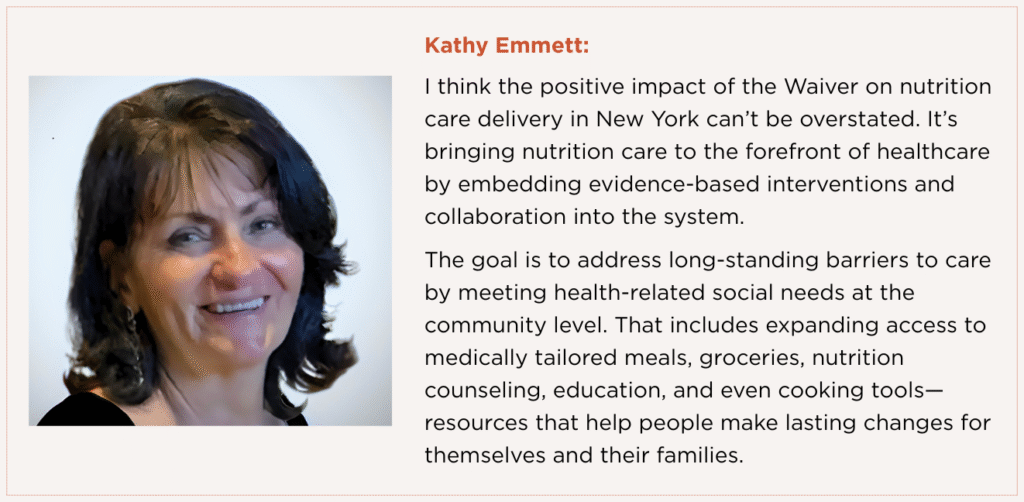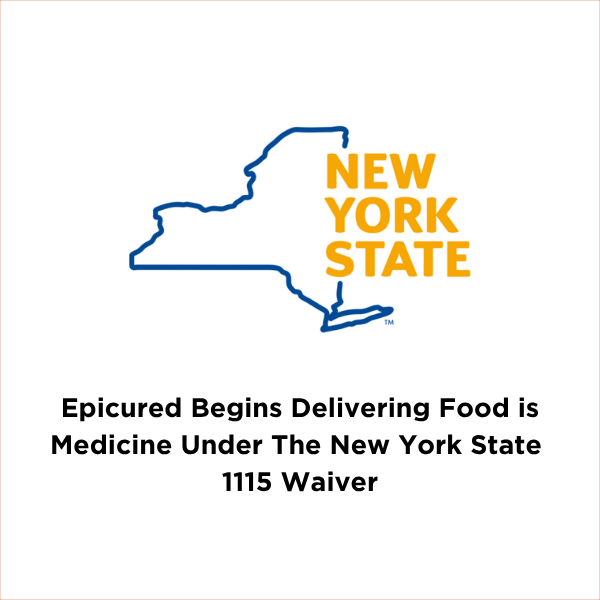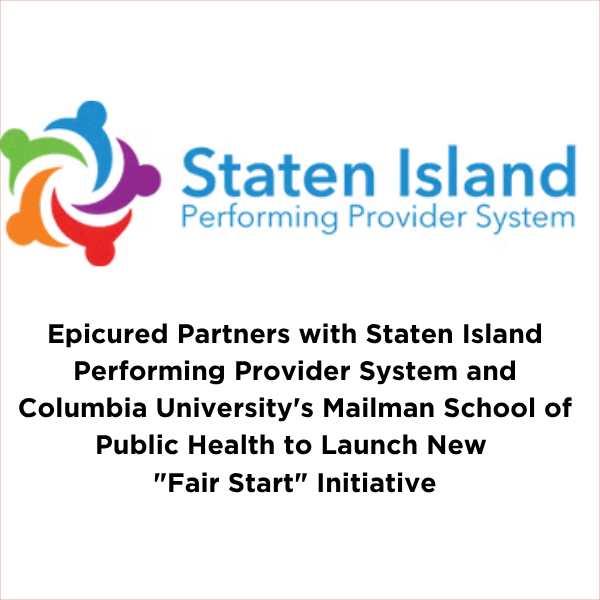We’re incredibly proud that Epicured is at the forefront of innovative initiatives like the New York State 1115 Waiver, which is transforming how medically tailored meals and essential nutrition support reach those who need it most. This week, I had the privilege of sitting down with two highly experienced RDNs, Kathy Emmett and Samantha Podob, who have been instrumental in implementing this groundbreaking program.
Our conversation offers invaluable insights into the practical application of “Food is Medicine” through the waiver, highlighting its potential to address health disparities and significantly improve patient outcomes across New York State.
Dr. Saba: Let’s start with the big picture. How do you both see the 1115 Waiver’s potential impact on nutrition care delivery in New York State?


Dr. Saba: What specific roles have you played in supporting Food is Medicine programs tied to the 1115 waiver?
Kathy: I’ve been engaged with the 1115 Waiver from its early phases. I helped develop and lead a pilot program at a hospital-based food pantry on Long Island. Patients who screened positive for food insecurity met with a dietitian and then accessed nutritious food options right there. It was so successful, we scaled the model to federally qualified health centers. Currently, I’m working with Epicured to match members with appropriate therapeutic meals and provide individualized counseling. I’ve also contributed to statewide recommendations as part of the NYS Food as Medicine Coalition.
Samantha: My role centers on member interaction. At Epicured, I help ensure that each individual receives meals tailored to their clinical needs, preferences, and any allergies. I provide follow-up counseling to reinforce their nutrition goals and build their confidence. It’s all about empowering clients to use food to improve their health outcomes.
Dr. Saba: How can nutrition interventions be effectively integrated into interdisciplinary care teams under this new waiver-supported model?
Kathy: Communication is key. Providers need to be informed about available nutrition services, the referral pathways, and the outcomes they can expect. When teams are aware and engaged, patients are less likely to fall through the cracks and more likely to receive comprehensive, continuous care.
Samantha: Dietitians should be brought in early. When we’re involved from the beginning, we can align the nutrition intervention with medical, social, and behavioral support. A dietitian might focus on meal plans, a social worker on housing, and a physician on clinical care. That synergy creates better outcomes across the board.
Dr. Saba: That leads perfectly into the next question. How can RDNs help address social determinants of health through waiver-supported programs?
Kathy: RDNs are uniquely positioned to address food and nutrition insecurity, which is a key social determinant of health. Through counseling and support, we can guide Medicaid members toward better food choices and link them to services that meet their broader health needs. We’re not just talking about meals—we’re talking about long-term healing.
Samantha: Exactly. From identifying food insecurity to recommending pantry staples or providing cooking tools, we bridge gaps in care. Personalized nutrition education can improve not just diet, but how people live and engage with their community.
Dr. Saba: To show value, what metrics should be tracked in these programs?
Kathy: Clinical outcomes like A1C or blood pressure are great when available, but they’re not always accessible. In those cases, we can measure changes in diet quality, food access, or even food frequency scores. These surrogate markers still tell a powerful story about impact.
Samantha: I also use 24-hour recalls and symptom tracking. Members often report improved digestion, more energy, or more consistent eating habits. Even qualitative outcomes—like feeling more in control—are indicators of meaningful change.
Dr. Saba: What barriers stand in the way of RDNs being fully utilized in waiver-eligible programs—and how can they be addressed?
Kathy: Awareness is a big one. Many providers and community organizations aren’t fully informed about the services the waiver supports or how to refer patients. We need campaigns that highlight the value of RDNs and make these processes easy and appealing to use.
Samantha: There’s also a broader issue of undervaluing nutrition in clinical care. Educating teams—through in-services, webinars, even social media—can shift perceptions. The more we advocate for our role, the more integrated we become.
Dr. Saba: Can you share an example of a time when you felt a member truly benefited from healthier nutritional options through your care?
Kathy: One case comes to mind: a young man with hypertension and high cholesterol. He was using Epicured groceries and enjoying the meals, but he’d gained 10 pounds in a month. When we reviewed his habits, we discovered he was drinking up to two quarts of sweetened juice a day! He was shocked at the sugar content. After that session, he decided to cut the juice completely. He told me he felt more in control and confident that he could now reach his goals with the foods we were already providing—something he never had access to before.
Samantha: I recently worked with a member with type 2 diabetes who wanted to lose weight and stabilize his blood sugar. Over two months, he lost 14 pounds and brought his glucose levels into the normal range. He felt empowered by how the meals supported his plant-based diet and appreciated the nutrition tips I shared about carb balancing and meal timing. He told me he finally feels hopeful and excited to continue his journey.
Dr. Saba: Beautiful examples. Lastly, what advice would you give to RDNs or clinical leaders aiming to make nutrition a core part of their organization’s 1115 strategy?
Kathy: RDNs should be proactive in articulating their value—how they guide sustainable behavior change and support outcomes beyond the clinic. Clinical leaders, meanwhile, need to understand that nutrition security is inseparable from broader social determinants. If healthy food remains inaccessible or deprioritized, full health equity will stay out of reach. Food isn’t just medicine—food is health.
Samantha: I’d encourage clinical leaders to view nutrition as central to chronic disease management, not a nice-to-have. RDNs can align perfectly with 1115 goals—reducing hospitalizations, managing disease, and supporting patients in a way that’s culturally relevant and community-based.
Dr. Saba: Thank you both for your time, insights, and heart-forward work. Your dedication not only supports clinical outcomes but uplifts entire communities. Programs like these are essential for expanding access and meeting people where they are—especially in communities that have historically been underserved. Here’s to a future where nutrition care is a standard, not an exception.
Learn more about Epicured’s Work with the NYS Waiver:




